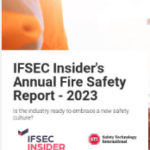Speaking at FIREX International, Kizzy Augustin, a partner at Russell Cooke LLP said she believes more individuals will be held accountable for the assessment and management of fire safety.
“We’ve seen it a bit in general health and safety, where risk assessors have been prosecuted in a personal capacity for failing to provide adequate advice or adequate risk assessments for the use of a business,” she told delegates.
“For the first time in 2014, a risk assessor went to prison for nine months for a breach of health and safety rules. That sent shockwaves through the risk assessor community. Before that a risk assessor had never been prosecuted successfully and facing prison. It’s a real prospect now.”
 Ms Augustin said some of the common issues which are being investigated after the Grenfell Tower tragedy including a lack of fire risk assessment, evacuation planning and the use of appropriate material.
Ms Augustin said some of the common issues which are being investigated after the Grenfell Tower tragedy including a lack of fire risk assessment, evacuation planning and the use of appropriate material.
“We are seeing as a trend moving forward that owners, occupiers and responsible persons are starting to say we are owners, ‘we are not safety professionals. We go out to look at people who are more experienced, so we went to a manufacturer and asked what’s the best fire door for our hotel. They suggested a particular fire door. They made no mention of the need for testing or appropriate standards. We went on that basis and the advice of experts’,” she explained.
“You can start to see how it might be used to fire safety risk assessors or anyone who is an expert in their field. There is now scope for owners and occupiers to push liability down to those who are advising on the use of various items at work or in a building.”
She added that the responsible person as defined under the Regulatory Reform Fire Safety Order (RRO) is normally the owner, occupier or the employer of the building.
“The problem is there are additional duty holders, by way of a contract or a tenancy that says something about your responsibility for maintenance or safety, which will bring you into play as another duty holder,” she added.
“But you are only responsible for fire safety to the extent of your control. There are a number of people who can be deemed to be duty holders. But how do you assess the extent of your control or liability when it comes to fire safety?”
According to Ms Augustin, the general definition of corporate responsibility is that it is a duty to take general fire precautions that will ensure as far as reasonably practicable the safety of employees.
There is a corresponding duty under the Health and Safety Act that talks about the health and safety duties owed to employees, and non-employees.
But she added that Section 37 of the Health and Safety At Work Act states that if an individual manager or senior manager has committed a health and safety offence by way of consent, connivance or attributable neglect, the individual as well as the organisation could be guilty of a health and safety offence.
“It does not matter whether you are defined, it’s about what you do day-to-day,” she explained.
“If you have influence over decision-making in your business, you manage finances, you supervise people or you are responsible for projects, you could be placed in that very category as a senior manager.
“It means you in your individual capacity could be investigated for fire safety breaches, and in the worst case scenario be prosecuted.”
Fire Safety in 2023 eBook
SHP's sister site, IFSEC Insider has released its annual Fire Safety Report for 2023, keeping you up to date with the biggest news and prosecution stories from around the industry.
Chapters include important updates such as the Fire Safety (England) Regulations 2022 and an overview of the new British Standard for the digital management of fire safety information.
Plus, explore the growing risks of lithium-ion battery fires and hear from experts in disability evacuation and social housing.

 Ms Augustin said some of the common issues which are being investigated after the
Ms Augustin said some of the common issues which are being investigated after the 